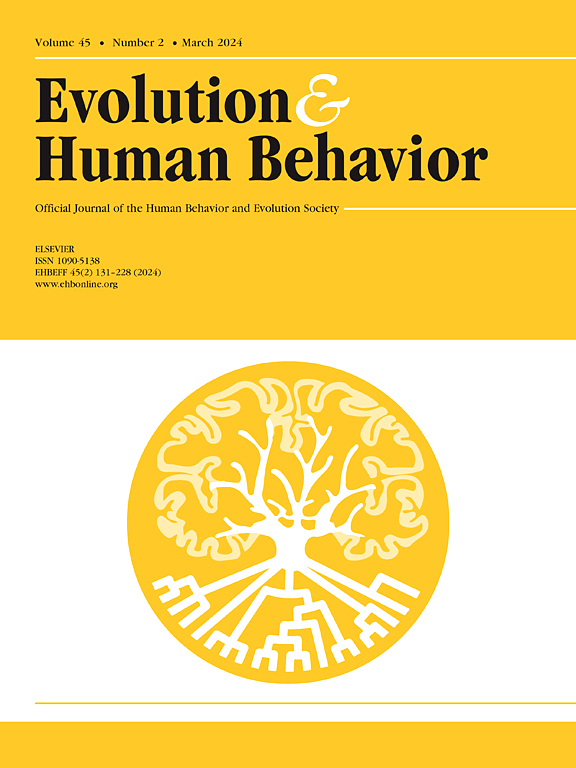Creating connection: greeting and leave-taking behavior in nonhuman primates
IF 3.2
1区 心理学
Q1 BEHAVIORAL SCIENCES
引用次数: 0
Abstract
Nonhuman primates create and maintain strong, positive social relationships with others. I examine the behaviors primates show when greeting their kin and allies, and how such greetings mirror embracing and kissing seen when humans are reunited or resolve conflict in order to maintain affiliative relationships. While physical contact during greeting creates opportunities for disease transmission and injury, it also helps to build and maintain social bonds and supports individuals when they reconcile and reunite. I also consider whether, like humans, primates also show leave-taking behaviors and if these are mediated by their relationship or the known duration of a loved one's upcoming absence. While there is clear evidence that primates do greet each other with physical touch and vocalizations, less is known about their leave-taking behavior. There has been a lack of study effort investigating leave-taking as compared to greeting behavior, and because proposed leave-taking interactions are more subtle than greetings further limits our ability to identify and track potential leave taking in nonhuman primates. I close with considerations of primates' responses to death – the most permanent departure. Disease and death disrupt social interactions both directly and indirectly and while human cultures have clear social rituals in response to death, there is a growing body of work demonstrating that primates also respond to the death of groupmates in distinct ways and that there are differential responses to the deaths of adult group members to those of infants.
建立联系:非人类灵长类动物的问候和告别行为
非人类灵长类动物与他人建立并维持牢固、积极的社会关系。我研究了灵长类动物在问候亲属和盟友时所表现出的行为,以及这种问候是如何反映人类在团聚或为了维持亲密关系而解决冲突时所看到的拥抱和亲吻的。虽然问候期间的身体接触为疾病传播和伤害创造了机会,但它也有助于建立和维持社会纽带,并在个人和解和团聚时为他们提供支持。我还考虑灵长类动物是否也会像人类一样表现出告别行为,以及这些行为是否受到它们之间的关系或所爱的人即将离开的已知时间的影响。虽然有明确的证据表明灵长类动物确实会用身体接触和发声来问候对方,但对它们的道别行为知之甚少。与问候行为相比,对道别行为的研究一直缺乏,而且由于提议的道别互动比问候更微妙,这进一步限制了我们识别和追踪非人类灵长类动物潜在道别行为的能力。最后,我考虑了灵长类动物对死亡的反应——最永久的离开。疾病和死亡直接或间接地破坏了社会互动,虽然人类文化对死亡有明确的社会仪式,但越来越多的研究表明,灵长类动物对群体成员死亡的反应方式也不同,对成年群体成员死亡的反应与对婴儿死亡的反应不同。
本文章由计算机程序翻译,如有差异,请以英文原文为准。
求助全文
约1分钟内获得全文
求助全文
来源期刊

Evolution and Human Behavior
生物-行为科学
CiteScore
8.30
自引率
9.80%
发文量
62
审稿时长
82 days
期刊介绍:
Evolution and Human Behavior is an interdisciplinary journal, presenting research reports and theory in which evolutionary perspectives are brought to bear on the study of human behavior. It is primarily a scientific journal, but submissions from scholars in the humanities are also encouraged. Papers reporting on theoretical and empirical work on other species will be welcome if their relevance to the human animal is apparent.
 求助内容:
求助内容: 应助结果提醒方式:
应助结果提醒方式:


